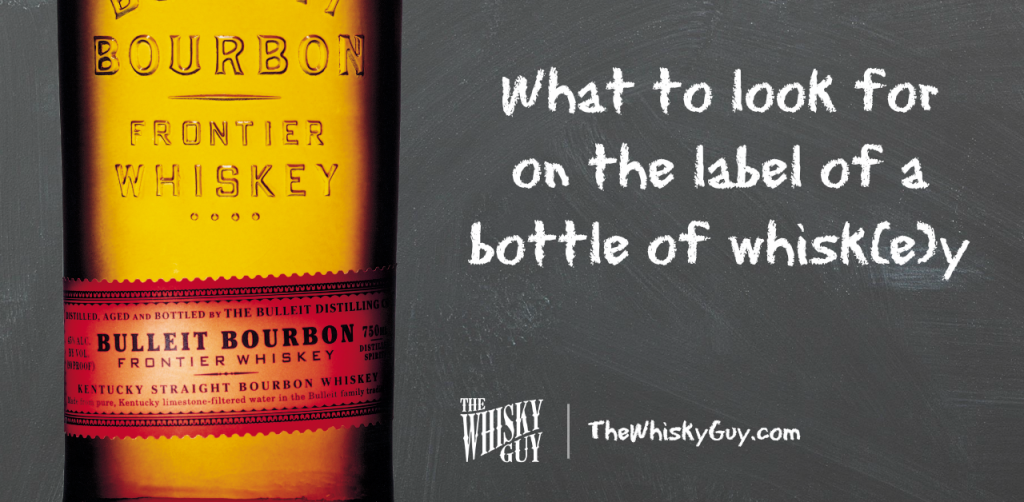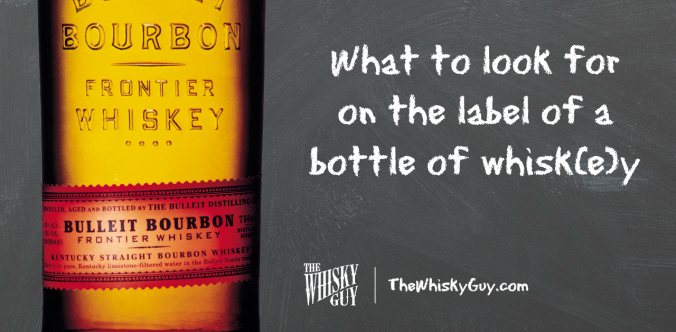
How do you choose the right bottle of whiskey? The label can tell you a lot!
It’s happened to all of us. There you are, at the liquor store, staring at a wall of whiskey. How do you choose between them? What do you look for to know what you’ll like?
Choosing a bottle of whisky to take home isn’t the easiest decision and there can be quite a few dollars riding on the line. Here are 5 things to look for that can help make sure you’re going home with something you’ll like.
Where’s the whisk(e)y from?
Where the whiskey (or whisky) comes from can tell you a lot about what’s in the bottle. Distillers around the world use different grains and production techniques to make their flavors. Sometimes it’s law (like in the US where Bourbon must have at least 51% corn and the term ‘Malt Whisky’ which must have 100% malted barley) and sometimes it’s a choice, but either way most distillers in a particular area use consistent grains. With Canadian distillers using mostly wheat, jumping to a big Scottish malt will be a big leap. If you know you like Irish whiskies, maybe stick with those when exploring new bottles.
What style is the whisk(e)y?
This one goes hand-in-hand with where a whisk(e)y is from. There are many styles of whiskey out there; Malt, Bourbon, Straight Rye… If you look at the label up there in the picture, you see “Kentucky Straight Bourbon Whiskey.” So, what does that mean? ‘Bourbon’ means it’s made from mostly corn and stored in charred new oak containers with no added colors or flavors, other than what came from the process and the oak it was stored in. ‘Straight’ means it was stored in that container for at least 2 years, and ‘Kentucky’ tells you where the whiskey was distilled. Like that style? See it on another label? There’s a good change you’ll like that whiskey, but a whisky that says ‘straight rye’ might be a little spicy for your palate. If you like a ‘Malt’ whisky from Ireland, there’s a good chance you’ll like malt whisky from the US, Japan, Scotland or India because malt whiskey is pretty consistent from place to place.
What color is the whisk(e)y?
The color of a whisky doesn’t tell you much about the age of a whiskey, but it does tell you a ton about the type of wood that was used which can tell you a lot about flavor. Is the whisky a very bright yellow? That’s likely a well used cask (maybe used to store US whiskies) and you can bet on light wood flavors; maybe some apple, citrus or tropical fruit flavors. The flavor of the grain will be more forward. A bit darker amber? This is a newer cask; look for deeper vanilla and caramel flavors. More red in the color? There were probably some wine casks being used; look for dried fruit flavors.
How strong is it?
The strength of a whiskey is measured by it’s ABV, or Alcohol By Volume. The higher the ABV, the stronger the whisky is. Proof is simply double the ABV; you can use them interchangeably, but be sure you know which you’re using. With stronger whiskeys, if it’s flavor you’re looking for, be sure to add a bit more water, or let the ice melt a bit more before you get into the whisky.
Is there any extra info?
Sometimes whisky-makers will put some extra info on the bottle. For example, they might tell you what type of wood was used. The label might say ‘Cask Strength’ – look for a high proof, as the whiskey wasn’t diluted between coming out of the cask and going into the bottle. There might be some flavor text – fun facts to share at parties.
Bonus: Age statements
The age statement of a whisky tells you the youngest drop, but not much more. I like to use an age statement on a bottle to bring all the puzzle pieces together. A really young whiskey that’s really dark? That’s a small, deeply charred cask and I should look for sharp vanilla flavors. A really old, medium amber with red hues? This is (hopefully) going to be a well-balanced whiskey matured (at least partly) in wine casks – I’m probably going to like that one 🙂
Conclusion
What you see in and on a whisky bottle can tell you a lot. We haven’t opened it, we haven’t smelled it, we haven’t tasted it, but at least if you follow what you know you’ll probably be happy with what you take home.
And remember – There’s no right or wrong whisk(e)y, no right or wrong way to drink whisk(e)y, there’s only the whisk(e)y that you like. And that’s all that matters!

Leave a Reply
You must be logged in to post a comment.